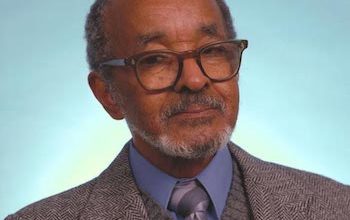Black ScientistsEarth & EnvironmentInventorsUSA
George Washington Carver, the agricultural scientist

George Washington Carver was an American botanist, agronomist, and inventor, born on January 1, 1864 near Diamond Grove, Missouri and died on January 5, 1943.
G. W. Carver was born a slave. His owner was a German immigrant named Moses Carver who also owns his parents and brother. His father died in an accident when he was still young. He and his mother were kidnapped by Confederate thieves for sale for their own profit, a common practice at the time. Carver charges John Bentley to find them. When he finds them, George’s mother, Mary, has already been sold and George was moribund. Bentley brought him back to his owner who rewards him with his best filly. But George developed a chronic respiratory disease that he would suffer all his life. Because of his weak constitution, George can not work in the fields, so he spends his time browsing the countryside and drawing wild plants. The acquaintance he acquires from plants gives him a certain reputation, and the neighbors of his landlord call him the doctor of plants.
One day, one of his neighbors calls him for help. After solving the problem, George enters the farmer’s kitchen to wait for his reward. He then discovers on the wall something he had never seen before: paintings of flowers. He then decides to become as much an artist as a botanist.
After the abolition of slavery, Carver and his wife adopt George and his brother. They encourage the boy to continue his intellectual training. When George turns twelve, he decides to leave the Carver to their despair. He decides to take charge of his education and his first destination is a school located in another city. But when he reaches, the was school was closed for the night. At the street, he sleeps in a nearby barn. The next morning, he decides to meet a woman who has a room to rent. He introduces himself as Carver’s George, the name he has worn all his life. The woman offers him a market: he will be paid to cook for the family and he will have the right to go to school. Sleeping on the steps of the porch of the house, he saves money to buy a cabin. But he suddenly leaves the city after the lynching of a black man. This event will mark him all his life.
He graduated from a high school in Minneapolis, Kansas. In 1887 he was admitted to Simpson College in Indianola, Iowa. He excels in art and music. The father of his art teacher, Etta Budd, director of the horticulture department at Iowa State College, discovered Carver’s horticultural skills. Etta Budd, aware of the difficulties that an African-American artist may encounter, convinces him to pursue a more pragmatic career in agronomy. He became, in 1891, the first American black to enter the Iowa State College of Agriculture and Mechanic Arts, now known as Iowa State University.
To avoid being confused with another George Carver in his class, he begins to use the name, George Washington Carver. Courageous and determined, Carver soon becomes involved in every aspect of campus life. He directs the school’s debate club. He also works in the canteen and as a sports trainer. He obtained the rank of captain, the highest rank in the campus regiment. His poems are published in the school’s journal and two of his paintings are on display at the Chicago World’s Fair in 1893.
In addition to his strong interest in music and art, Carver also excels in botany and horticulture. His teachers Joseph Budd and Louis Pammel encouraged him to continue his studies after obtaining his baccalaureate degree in 1894. Thanks to his great knowledge of plant cultivation, Carver was hired by the faculty, becoming the first black American member of a university faculty in Iowa.
During the next two years, as a botanist assistant at the experimental station of the school, Carver developed his scientific skills in plant pathology. He publishes several articles that make him known to the scientific community. In 1896, he finished his master’s degree.
In 1896, Carver was hired by the Tuskegee Institute in Alabama at the request of Booker T. Washington (1856-1915) and specialized in botany. He becomes director of research.
He works with farmers in the southern United States, where the repeated cotton cultivation has depleted soils. He advocates the use of a nitrogen supplement with the cultivation of legumes, such as peanuts. As a result, the cotton harvest is improved and new crops improve farmers’ incomes. He developed an agricultural training system in Alabama as well as a research laboratory.
To improve the marketing of these new crops, Carver diversifies their uses; and peanut has 300 different uses, ranging from glue to printing ink, but it is not the inventor of peanut butter contrary to what a legend says. He is also interested in the use of sweet potato and pecan nut.
Although Carver’s agronomic work is not well known, he is one of the most famous black Americans in the United States. He meets Theodore Roosevelt on the occasion of the funeral of Booker T. Washington in 1915. The peanut producers charge him to represent their interests before the US Congress.
Carver received the 1923 Spingarn Medal, awarded by the National Association for the Advancement of Colored People. He is chosen as a symbol by various organizations fighting against segregation. Franklin D. Roosevelt donates $ 30,000 to build a national monument to honor George Washington Carver’s contribution to the nation and the world.
Carver died on January 5, 1943 from a fall on a staircase.
He appears on a postage stamp issued by the United States in 1947 and again in 1998. He is also featured on a commemorative half-dollar coin in 1953. A submarine, the USS George Washington Carver is dedicated to him.





